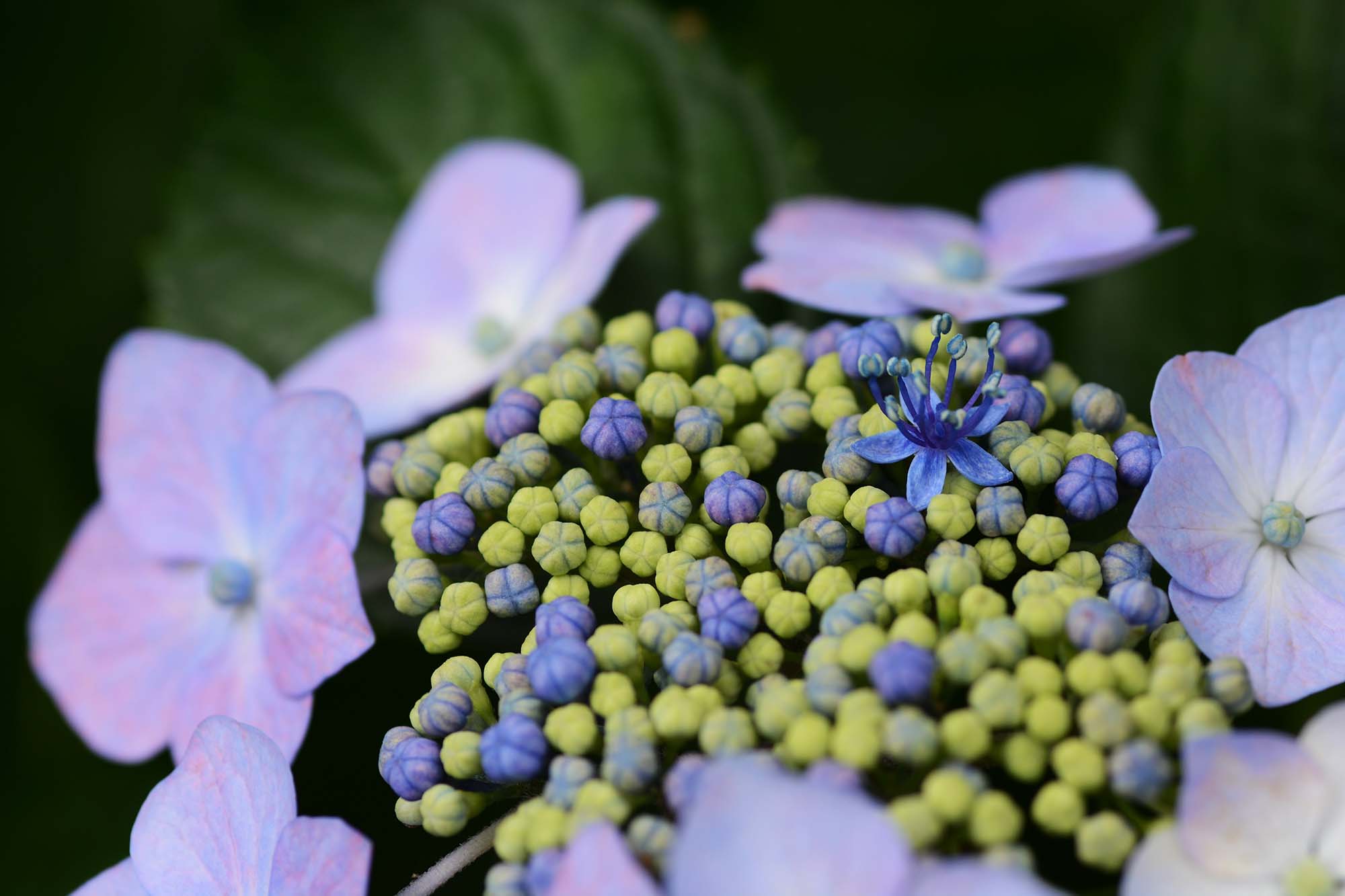- © 2025 Annapolis Home Magazine
- All Rights Reserved

Because the delicate lacecap hydrangea takes some time to mature, it is not immediately as showy as its cousin, the mophead, with its quintessential lush flower balls, or the panicled hydrangea, sporting audacious cones. For this reason, I never gave the lacecap the attention it deserved. This all ended last weekend when I visited my mother’s shade garden on the Magothy River. The afternoon was blissfully quiet—the kids were not there playing Toad Olympics on the diving board with live toads!
Something caught my eye—a lacecap hydrangea swaying at the south edge of the garden, with 30 or so flowers as broad as my hand. Large sea-blue “petals” or florets encircled a cluster of tiny yet rich blue-green buds on each flowerhead, hundreds of them, it seemed. Every now and then, one of these tiny buds shot up taller than the others and bloomed as if raising its hand. The more I stared, the more its delicate lacework revealed nature’s complex mind.
I could not figure why so many shades of blue were necessary or how they could appear and reappear in a kind of allegro, dashes of blue-violet accentuating the inflorescence. Upon scrutiny, the light blue centers in the prominent outer florets reappeared in the veins of the tinier florets’ transparent buds. As each opened, the delicate shade appeared yet again in its pin-sized floweret.
I learned that the lacecap hydrangea has an unusual structure. In the flowerhead are two kinds of flowers, or florets: sterile and fertile. The larger, showy florets that ring the edge of the flowerhead are called ray florets, like the ray flowers of a sunflower. However, they are sterile, so fewer are needed. Their main purpose is to lure pollinating insects to the less obvious yet numerous inner fertile florets that, when pollinated, make fruit/seeds and reproduce so the species may continue.
The lacecap, leaning out from the deep shade, will shut down any worry you may have, almost hypnotizing you with its minute magnificence. A fine embroidery seems to reach into your mind to calm you with its beauty.
So, if you are open to their subtle communication style, hydrangeas may bring enchantment to the garden while being mentally helpful at the same time! If you would like to raise them, keep in mind that hydrangeas grow well in Maryland, prefer well-drained acid soil, and need part sun and part shade to thrive.
Now here is something extra special: my colleague Elizabeth Davis, a garden enthusiast like me, shares that her grandmother Helen taught her how easy it is to propagate the hydrangea. Simply cut off a small branch and scratch the woody stem with your fingernail until the green pulp shows through. Next, lay the branch flat and horizontally on the ground and cover with a rock, brick, or something heavy until next year. When you check it, you will find that it has rooted! Then, dig carefully around your baby hydrangea, lift out, feed it compost, and plant in good soil in a shady spot.
If you grow hydrangeas and have a photograph or a tip to share, send to me at kymberly@annapolishomemag.com. I will share my favorites on my Instagram @thehighheeledgardener. The person with the best tip or photograph will win a $50 gift card to their favorite garden shop.
Happy hydrangea gardening!
© Annapolis Home Magazine
Vol. 12, No. 4 2021